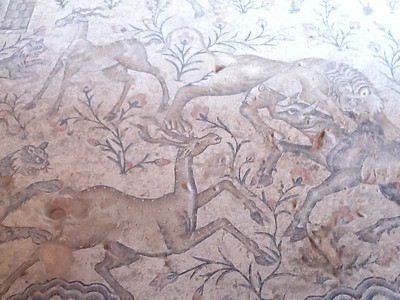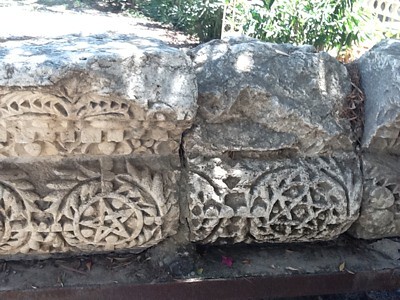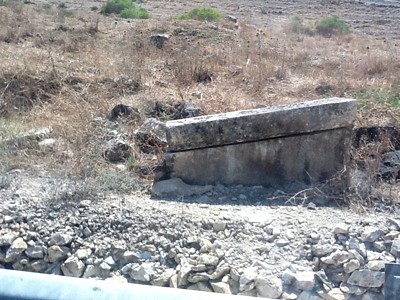Today’s touring focused on sites connected with Jesus – and one strikingly unconnected. We began in Nazareth, whose Church of the Annunciation is the key location.

I may have more to say on a later occasion about why I sought permission of the priest in charge to get access to a locked stairwell, and what I saw there when I did, but for now, it is more appropriate – and much more fun – to be allusive and mysterious.

Next, to Sepphoris, the former capitol of Galilee, and interestingly not mentioned in the New Testament. This in itself is noteworthy – the importance of what is not said sometimes being as great as the importance of what is said. Jesus’ focus lay elsewhere – among the ordinary Jewish populace of towns and villages, not the urban Hellenized elite.

We also passed through Cana. This led to a thought about mythicism: The likelihood that Christians in some other part of the world decided to turn a belief in a purely celestial figure into a narrative about a historical one, set it in this part of the world, and got so many place and people names authentic and accurate would be nothing short of a miracle. And so historical study prefers a more probable scenario, that there is some genuine reminiscence of actual events this part of the world in the origins of Christianity. Everyone gets some things wrong, and many of the stories told are at best highly mythologized developments from stories about things that happened. But this is only one part of the picture. Getting details right in a time before accessible written records or encyclopedias was far more difficult than mythicists seem to realize, and so when it happens, it often reflects access to accurate information, whether oral or written.
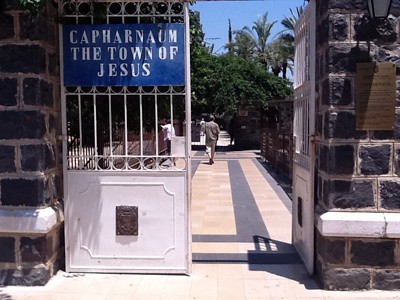
The next stop was Tabgha, the site traditionally associated with the miracle of the loaves and the fishes. This perhaps illustrates the reverse process: when a historical figure is believed to have lived in a certain area, many places will claim some connection to him.
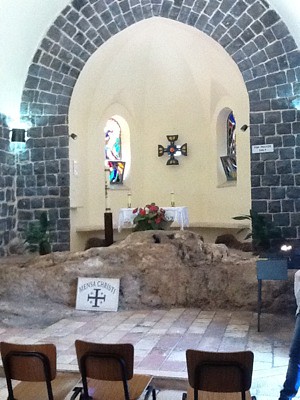
Eldad kindly illustrated walking on water there.
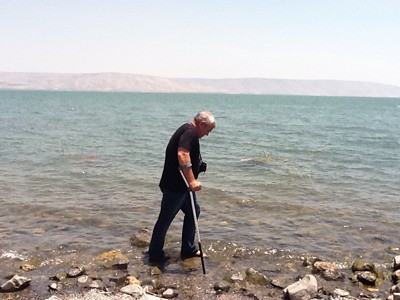
Then Capernaum, with its well-preserved synagogue.
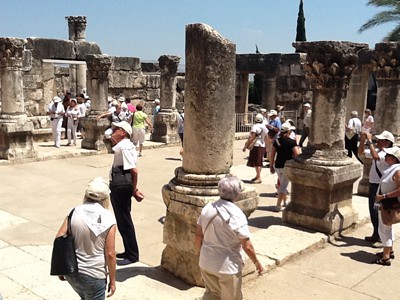
After returning to Tiberias, I spent some time seeing the remains of the old city and then walking through the new – along the promenade, then up the main street in the direction of my hotel.
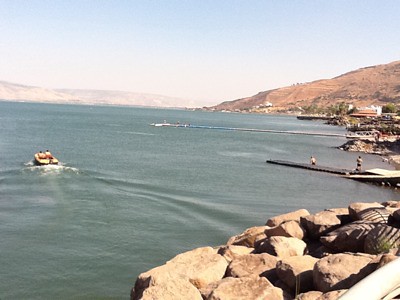
Let me conclude with some photographic evidence of something I mentioned in a previous post. I was not exaggerating or making things up when I referred to sarcophagi simply lying on the side of the road beside the highway. Today we stopped just long enough for me to take a few photos.
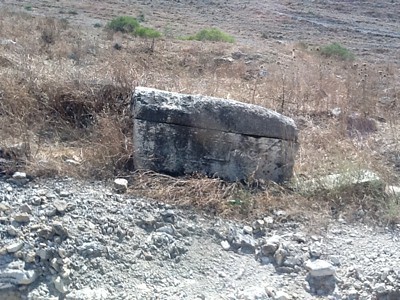
If you are an archaeologist or a historian hoping to make some noteworthy discovery, it seems that there are plenty of places where there are visible opportunities. Documenting and exploring them might not lead to fame and fortune as you overturn long-established assumptions, but you can certainly find something that has not been written up and thus turns easily into a publication. And we all know that discoveries made in this part of the world sometimes do turn out to be of unimaginable historical significance.
To do that shouldn’t take much – just a careful eye, attention to detail, and slowing down and focusing in one place more than I had time to on this visit. Tomorrow will be my last day here. It is hard to believe that my first visit to Israel is almost at an end, and yet it has had so much packed into it that it seems like it has been longer than it was. I am looking forward to returning with students, and at some point with my family, and perhaps also to spending some time involved in something more archaeological in nature.



